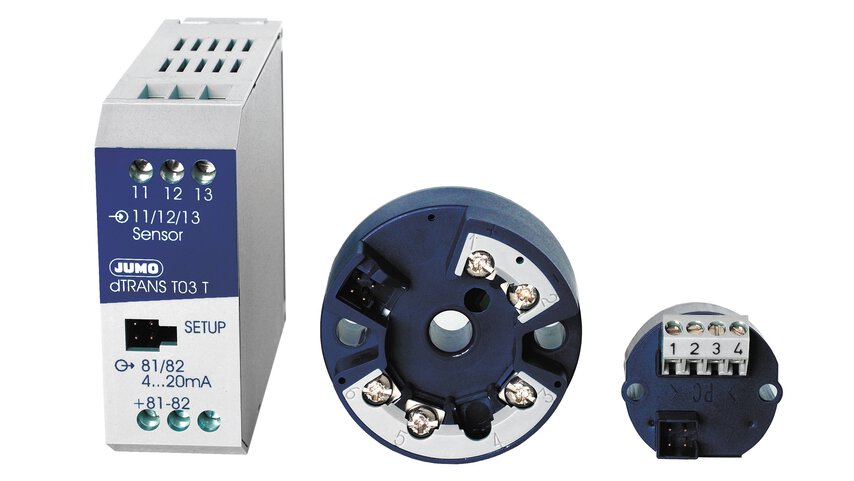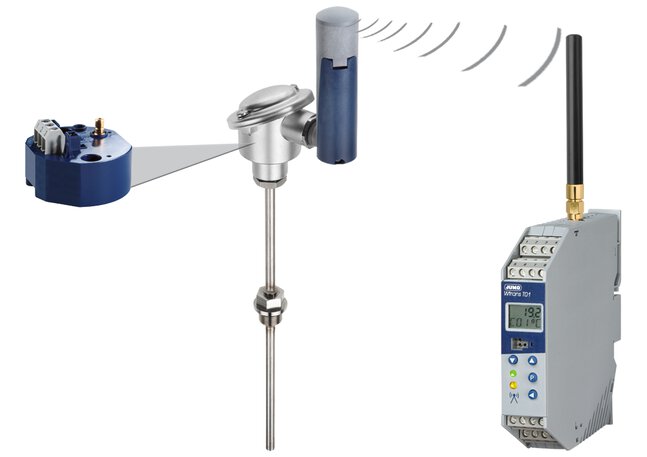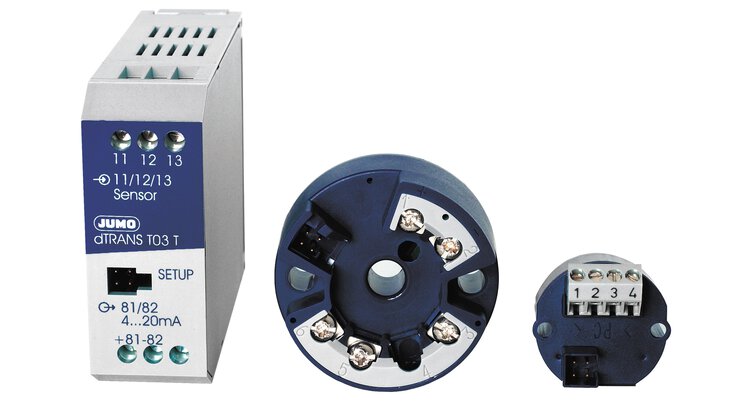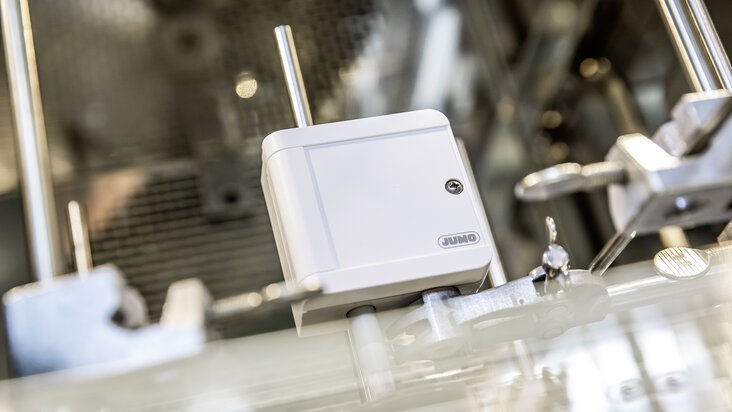

Temperature transmitter – working principle, types
A temperature transmitter is a commonly used device in measurement systems. How does this device work and for what purpose is it used? What types of temperature transmitters are there? What is the difference between a temperature sensor and a transmitter? Read on and find out the answers to these questions!
What is temperature transmitter?
A temperature transmitter is a type of measurement transducer - a device that processes measurement signals.
Temperature transmitters can be stand-alone devices, or they can work in conjunction with temperature sensors.
Temperature transmitter – operating principle
Temperature transmitters amplify the signal from a temperature sensor (e.g. resistance temperature sensor pt100, thermocouple), ensure its linearisation and conversion into a voltage signal (e.g. 0-10 V) or a current signal (e.g. 4-20mA, 0-20mA) . They are the heart of the measurement system, as they convert the physical values into a measurement signal that is comprehensible to the controller (e.g. PLC, controller, rejstrator).
Example of temperature transmitter operation
For example, a transmitter with a thermocouple input draws a current of 4 mA from the power supply when measuring the lowest temperature.
Then, as the temperature increases, the transmitter draws a proportionally higher current until it reaches 20 mA, the maximum temperature sensed by the sensor.
In other words, 4 and 20 mA correspond to the lowest and highest temperature of the sensor respectively. For example, if the temperature range of the sensor is 0-100℃, a 4mA signal would indicate 0℃. In the same way, 20mA would indicate 100℃.
Advantages and purposes of temperature transmitters
The main task of temperature transmitters is to convert the analogue signal from the primary measuring element into a standardised output signal. Sometimes, this analog signal is converted to a digital signal.
However, modern temperature transmitters with digital transmission technology have much more to offer: they offer significant improvements in measurement accuracy, versatility, safety and cost savings.
In summary, the advantages of using transmitters in the temperature measurement process are:
-
the temperature sensor signal is more resistant to interference present in industrial environments, even over long distances
-
they provide galvanic isolation (isolation between the functional blocks of an electrical system, which prevents direct current flow from one block to another) between the Pt100 circuit and the input signal
-
allow the use of ordinary transmission cable instead of compensation cables
-
temperature converters for thermoelectric sensors compensate for cold end temperatures
-
simpler maintenance and greater diagnostic capability
-
output signal is compatible with many standard devices

Measuring system with JUMO Wtrans B wireless temperature transmitter mounted in the sensor head
Temperature sensor versus temperature transmitter – the difference
The most noticeable difference is that a temperature sensors, like resistance temperature detectors, are devices that measures or senses physical temperature and converts it into measurable units of electrical current, including voltage or resistance.
A temperature transmitter, on the other hand, is a device connected to a sensor that works to convert the measured temperature into a signal so that it can be seen, recorded and maintained.
Although they are different devices, both temperature sensor and temperature transmitter work together and play a key role in ensuring that the temperature is accurately measured and transmitted so that it can be controlled.

The temperature sensors and thermocouple temperature transmitters are different devices that work closely together
Temperature transmitters – types
By signal
With regard to the signal, a distinction is made between :
-
analog output temperature transmitters
-
temperature transmitter 4 20ma - the most commonly used, as most industrial devices are designed to communicate in this temperature range.
-
0-10V temperature transmitter
-
digital temperature transmitters
By mounting type
With regard to the mounting location, we divide temperature transmitters into:
-
head temperature transmitters - designed for direct mounting in head temperature sensors
-
DIN rail mounted temperature transmitters for panel mounting
-
field transmitters for installation in process plants

Temperature transmitters of the JUMO dTRANS T03 series – on the left DIN rail mounted, two heads on the right
Additional functions
The temperature transmitter can have additional sensors integrated, e.g. humidity or pressure. You can also choose between, for example, a version with or without a display.
-
humidity and temperature transmitter - integrated humidity sensor
-
pressure and temperature transmitter - integrated pressure sensor
-
temperature transmitter with lcd display
Application
Some demanding applications, such as hazardous areas, require specially adapted transmitters.
-
temperature transmitter for ex zones

JUMO dTRANS T06 Ex Zone approved temperature transmitters
- ${title}${badge}

